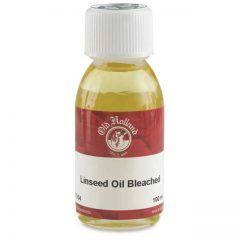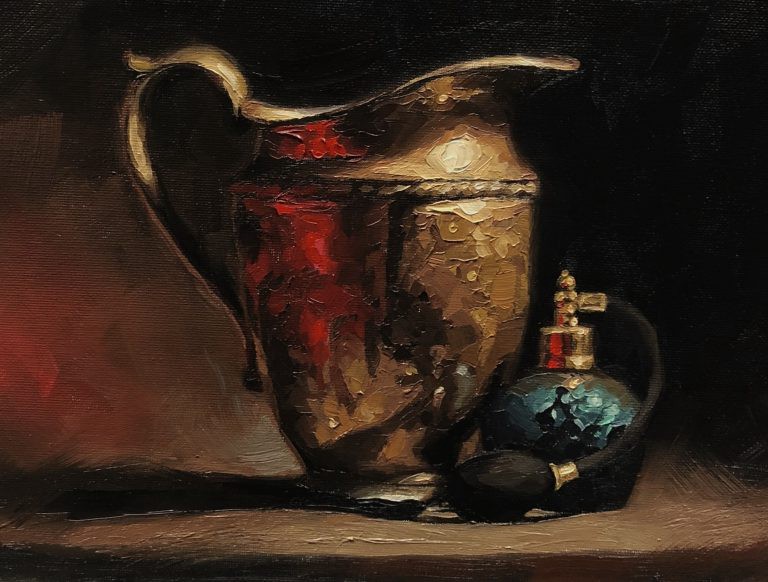
Oil painting is a versatile and beginner friendly medium, contrary to popular belief! Keep reading to learn more about it. Photo by Old Holland
Have you ever wanted to try oil painting, but been put off because of things you’d heard about the medium?
It’s toxic! It takes years to dry! It’s impossible to use!
I’ve met many artists who haven’t even tried oil paints because they believed these myths.
If you're asking yourself, 'Is Oil Paint Toxic?' - this is the post for you.
There are plenty of myths and misconceptions about oil painting and oil paints. But with some clear information, you’ll find that oil paints are a safe, quick-drying, and easy-to-use medium. So let’s dispel some oil painting myths!
Myth 1: Is Oil Paint Toxic?
This misinformation is fairly common among those who have not tried oil painting. However, the vast majority of oil paint is not toxic. In fact, unless you eat your oil paint (which is never recommended) there are no adverse effects to most oil paints.
So, is oil paint toxic?
In short, no. Oil paint is made up of natural oil and pigment, and the majority of pigments are completely safe and non-toxic.

Rather than oil paints, there are mediums like turpentine that are the toxic components of oil painting. However, these toxic mediums can be swapped out for safer mediums like linseed oil. (Photo by Old Holland)
There are a few toxic ones, like lead-white, cadmium, and cobalt, but they are only toxic if you eat or breathe in the dry pigment before the oil is mixed.
These colors can also be substituted out for synthetic alternatives, which are even safer to use.
A lot of people believe that there is a toxic smell that accompanies this paint. However, oil paint itself has very little to no smell.
The unpleasant, toxic smell many people talk about comes from the solvent (turpentine or white spirits) many artists use to help the fluidity of paint, cleaning, or drying time.
Leaving open turpentine lying around will indeed fill a room with a toxic fume. However, there are safer alternatives to use, like linseed oil, which is a fairly scentless, safe alternative to turpentine.
Brushes can also be cleaned with a bar of simple ivory soap, rather than turpentine to keep children, pets, and yourself away from the smell and touch of turps.
In addition, if you are using high-quality paint, you can get away without using a medium, using the paint straight from the tube.
Medium is only necessary to change the characteristics of the paint. It can speed or slow drying, increase transparency, or increase fluidity, but can also be left out of your painting process entirely.
So asking, is oil paint toxic, really has little to do with oil painting. This has more to do with unsafe practices and unnecessary mediums.

Paintings done in an impasto technique may take longer to dry, but a thin layer of oil paint will dry in several hours. Credit: Abbie Rugg
Myth #2: Oil Painting Takes Too Long to Dry
This common oil painting myth can be true in certain circumstances, just like any other type of paint. Oil paint only takes a long time to dry in very certain circumstances and if the paint is applied in very thick layers.
Depending on the color, some oil paints will dry a bit slower than others, but if you are working with a smooth, thin, opaque layer of paint, your painting will most likely be dry within 24 hours.
However, certain colors like white may take a bit longer to dry depending on the application thickness.
Painters who use the impasto technique, or puddling, will often have to wait a week or two for their paint to dry. Very, very thick impasto can take several months. But if you choose to work in a thinner manner, your paint will dry very quickly.
A medium can also change the drying time of the paint. Linseed oil helps paint to tack up and dry within six hours and be fully dry in about 24.
Using just an alkyd, your paint will start to dry within four hours. But if you choose a medium like clove oil, your paint may stay wet for several days to weeks.
These mediums can be helpful if an artist likes to work into wet paint, but certain mediums can also help to speed up the drying time.
The myth that oil painting takes too long to dry really depends on how you are painting, and in general, oil paint dries quite quickly.
Myth #3: Oil Painting is Difficult to Learn
Like asking, 'is oil paint toxic?' this misconception has to do with something else entirely. Rather than the oil paint itself, it has to with education.
The majority of people who try oil painting and struggle to learn it have the same struggles with any other medium. Learning how to oil paint is no more difficult than any other paint type, but if you don’t have a proper education, art is difficult.
Art doesn’t require rules, but education does.
So if you’ve been trying to learn how to oil paint and you’re giving up because it’s difficult, it may not be the materials, it may be the instruction.
Materials don’t make us better or worse, so if you are struggling, consider finding a teacher to guide you through learning how to oil paint. This medium is a fantastic way to express your creativity, and the right teacher can guide you to success.
Final Thoughts: Is Oil Paint Toxic and Other Myths
There are many oil painting myths, but by looking a bit deeper, we can see that they can easily be disproved. Oil painting is a simple, safe way to create art and paintings and is suitable for students and professionals alike. If you are wondering, 'is oil paint toxic?' the answer is no.
Now that you know some of the truths behind common oil painting myths, you’re ready to tackle the medium and discover the benefits of oil painting. If you want to learn more about oil painting, click here for our FREE masterclass.
FREE MASTERCLASS:
The 4 Part Framework to Develop Artistic Excellence in 12 Months
Frequently asked questions - is oil paint toxic?
No, oil paint is not toxic.
Only a few pigments, like lead white, cadmium and cobalt are toxic if you eat it (don't do that), and if you breathe in the pigment before it's mixed into paint (which you are not exposed to).
The toxic smell is not the oil paint.
The unpleasant smell actually comes from the solvent (turpentine or white spirits) many artists use to help the fluidity of paint, cleaning, or drying time.
However you don't need to use turpentine. You can use linseed oil as a medium which is a fairly scentless, safe alternative to turpentine.
For cleaning, brushes can be cleaned with a bar of simple ivory soap.
If you are working with a smooth, thin, opaque layer of paint, your painting will most likely be dry within 24 hours.
Certain colors like white may take a bit longer to dry depending on the application thickness.
Painters who use the impasto technique, or puddling, will often have to wait a week or two for their paint to dry.
Linseed oil helps paint to tack up and dry within six hours and be fully dry in about 24.
Using just an alkyd, your paint will start to dry within four hours. But if you choose a medium like clove oil, your paint may stay wet for several days to weeks.
No. Learning how to oil paint is no more difficult than any other paint type, but if you don’t have a proper education, art is difficult.
So if you’ve been trying to learn how to oil paint and you’re giving up because it’s difficult, you may want to consider looking for a different course or program that can help you.

